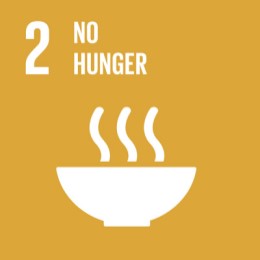Today, there are 1.2 billion young people aged 15 to 24 years, with a greater proportion of youth in the less developed regions (UNDESA, 2019b)
The exponential growth in the percentage of the young population creates an opportunity for a demographic dividend that can have a positive impact on economic growth, political stability, innovation and social and sustainable development. However, due to barriers from the regulatory, supply and demand side only 53 percent of young people have access to formal financial services in developing economies. Young women are at an even greater disadvantage, at five percentage points lower in access compared to young men (51 and 56 percent respectively). (Global Findex database, 2017)
Although access has increased by 11 percent between 2014 and 2017, usage remain low with a high proportion of savings kept outside financial institutions (only 15 percent of young people saved at a formal financial institution in developing countries)
Advancing youth financial inclusion requires introducing a number of regulatory reforms to address youth specific constraints through innovation, while also ensuring consumer protection and responsible finance.
The situation of financial inclusion of young population can be improved by examining regulatory frameworks and public policy initiatives along four pillars: Data collection (systematically from different perspectives, including Demand side, Regulatory side and Supply side), National Strategies, Regulatory approaches and Public Policies and Non-Regulatory Interventions.
Specific efforts towards enhance financial resilience trough financial inclusion policies in this huge and promise generation is needed by policy makers, regulators and industry players to ensure that no one is left behind.
Despite these challenges, AFI members are increasingly recognizing the importance of youth financial inclusion. At the AFI Global Policy Forum in 2019, for example, they unanimously approved the Kigali Statement, which commits to harnessing the capacity of youth and other disproportionately financially excluded groups to drive inclusive growth.
How have AFI members shown policy leadership?
- Central Bank of Jordan
Central Bank of Jordan included youth as a specific target group in the National Financial Inclusion Strategy (2018-2020): “15 to 24 year-old in general; 15 to 18 year-olds in particular”
- Central Bank of Samoa
The NFIS (2017-2020) of the Central Bank of Samoa has as a strategic objective: “Promote economic empowerment and participation of underserved segments, especially women and youth, for inclusive growth”
- Reserve Bank of Zimbabwe
The Reserve Bank of Zimbabwe identified the youth target group with special focus in the NFIS (2016-2020) and established a Youth Working group to promote the development of innovative financial products and facilitate capacity building programs for the youth to complement access to financial services.
- Bank of Uganda
Bank of Uganda included youth above 15 as one of its three priority areas in the NFIS (2017-2020)
Kigali Statement
Recognizing the economic significance of youth and the financial barriers they face, AFI members approved the Kigali Statement during the 2019 Global Policy Forum. This Statement acknowledges that youth are currently a disadvantaged group in the formal financial system that rely more heavily on unregulated informal financial services, have less access to economic opportunities and are at greater risk of being trapped in a cycle of intergenerational poverty.
Youth Financial Inclusion Maya Declaration Commitments by AFI members
Several AFI members have made concrete financial inclusion targets on youth. Among them is Bank Negara Malaysia, which completed its commitment to increase the financial capability of young adults (aged 18 to 30). Bank of Sierra Leone and Reserve Bank of Zimbabwe, meanwhile, both made commitments on collecting disaggregated data, including for youth, while Reserve Bank of Fiji announced aims to increase the number of youth accounts at formal financial institutions to 80 percent in 2020 from 51 percent in 2015.

 About
About
 Online
Online
 Data
Data
























